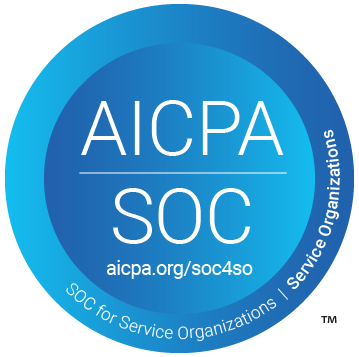Client-Centric vs. Investment-Centric Marketing at Asset Management Firms

Times are changing, and the modern consumer’s attention won’t be captured by old-school marketing tactics anymore. This is especially true for asset management firms. Good performance isn’t enough. With thousands of options, investors not only put more emphasis on what they are investing in, but they also want to feel like a priority; that their values, interests and goals are at the top-of-mind to their advisors. Firms that understand their clients do better in the marketplace. As the industry becomes more challenging, firms must move from investment-centric to client-centric messaging.
Who is Your Customer?
To develop a client-centric strategy, a firm first has to answer a very critical question…Who is the customer? The answer will shape everything that comes out of marketing. Firms target multiple audiences, and it can be tough to get it right. I once participated in an investment marketing roundtable event where one marketer joked that, in a regulated company, sometimes the customer’s believed to be FINRA. Or, in places where there’s a very strong CEO or management team, it feels like they’re the customer. When a marketer has to navigate through this type of influencer, it’s much more difficult to focus on the real customer. When the functions of marketing teams revolve around requests from other departments, there’s little insight into what the customer really needs.
At many firms, marketing receives an onslaught of requests from salespeople. It’s important to establish that sales is not a customer, they are a partner. Rethinking this relationship can lead to a huge positive shift in culture. Instead of telling marketing what to deliver, sales should partner-up to have conversations. The outcome is alignment, leading to both teams knowing who they’re targeting, discussing who it’s for, what questions collateral should answer and why the client should care. Though not all firms have reached this point, it’s something they should be striving for.
What Is Your Message?
There are two camps – firms that can focus on client-centric messaging (and do) and firms who can’t. The ones who can’t are busy managing money. So, they need help to craft their message and train their people on how to deliver it. Investment-centric firms tend to let investment teams drive content, wherein the messaging focuses on investment strategies. When firms operate out of this culture, it comes through in the way they talk about products, meaning they get nitty-gritty about the process. But people don’t care about that. Everybody’s got a core bond fund. Everybody’s got a large-cap value fund. So what makes a firm different? Think about it; you can’t spell customer(s) without CUSTOM, and firms are struggling to customize their sales approach because of the way their businesses are structured.
Even when the customer is well-defined, there are still thorny issues to confront because every firm has multiple channels. Each customer segment has different needs, so they’ll respond very differently to marketing outreach. For example, institutional clients rarely respond to email. They’re listening to their consultants. Some firms struggle to translate a high-touch institutional heritage into a retail environment. By asking themselves “what are three reasons why financial advisors care to take a call from our firm”, they can boil down the value proposition to guide their messaging, content and sales efforts. On the other hand, HNW teams lean more towards the richness and the feel, not about the content. This group is interested in the brand, the presentation, and the packaging. In contrast, salespeople on the institutional side don’t care what the branding looks like, as long as the content is very focused on what the client is requesting.
What Role Should the Portfolio Manager Play?
Some firms are trying to reduce the involvement portfolio managers have in messaging to become more client-centric. For example, one marketer I spoke to talked about making a shift toward removing the portfolio management teams from being so integral to the messaging. “Who really wants to go through a 90 page fixed income document? Nobody other than the PM can explain it, and getting them to understand that content means nothing to a non-fixed-income expert,” she said. This is one way to solve the problem, but the portfolio manager doesn’t necessarily need to be cut out of the process in order for a firm to become customer-centric.
The PMs are the most influential people a firm has. According to Dan Sondhelm, “They are geniuses when it comes to managing money, but haven’t learned strategies for communications.” A firm should make PMs the face of the firm and teach them how to communicate and stay on message. By participating in webinars, sales meetings, and other marketing activities, PMs may realize their story isn’t resonating, and they can go to marketing for help. Marketing encourages them to focus on problems they’re solving and less about the investment process. When materials say, “We have low turnover”, while it is a benefit, clients think, “SO WHAT?” Try something like, “We hold our stocks for a very long time, we are committed and believe in these stocks, as a result, we don’t sell them very often. This means you save on taxes and expenses”, says Sondhelm.
Though PMs aren’t always considered in the marketing strategy, there should always be room at the table for them. If marketers can influence them before they start down another path, they’re able to be more customer-centric.
So Where Do You Start?
When you’re trying to figure out who your customer is and craft your client-centric message, where do you start? CEO of Sondhelm Partners, Dan Sondhelm, recommends letting your situation and goals drive your priorities. He said, “It depends on your circumstances. If you’re a $50B shop, you need new messaging and don’t know who your customers are, you might want to start by figuring out who your customers are. But if you’re a $500M shop with friends and family money, then you probably want to start with the messaging. It all depends on your overall goals and where you want to be in 5 years. Map out a strategic plan and be disciplined about executing.”
Want to know how firms are achieving both customer-centricity and compliance? Check out this On-Demand Webinar: The Sales Success Formula in Financial Services — Blending Customization & Compliance
Here are some related resources that might interest you:







 Compare the Top 3 Finserv Content Automation Vendors [White paper]
Compare the Top 3 Finserv Content Automation Vendors [White paper] Create Pitchbooks the Drive Sales [White paper]
Create Pitchbooks the Drive Sales [White paper] Build vs. Buy: Should Your Financial Services Firm Outsource or Insource Marketing Technology? [White paper]
Build vs. Buy: Should Your Financial Services Firm Outsource or Insource Marketing Technology? [White paper]  10 Tips for Rebranding your Fund Marketing Documents [White paper]
10 Tips for Rebranding your Fund Marketing Documents [White paper]


